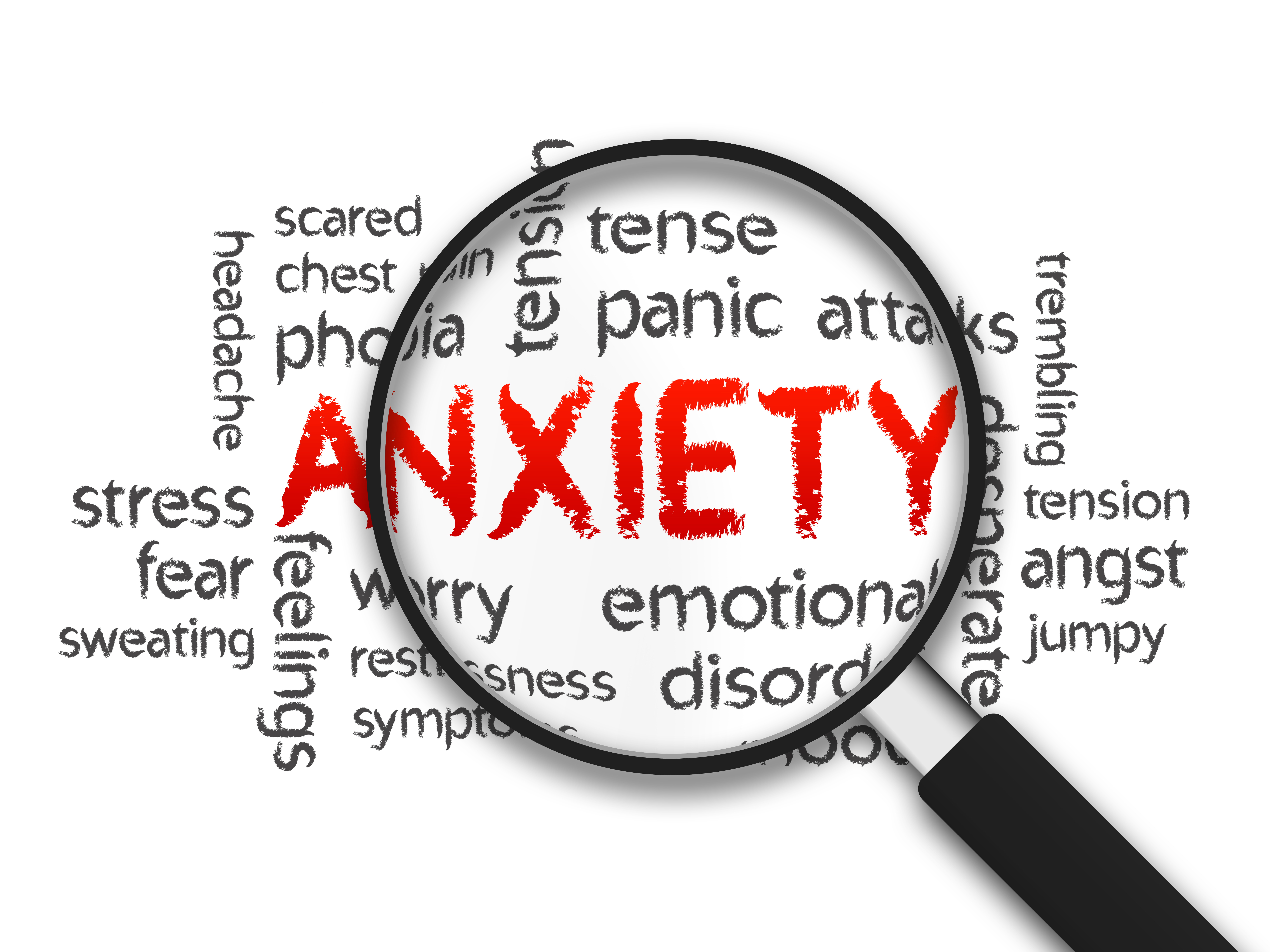12 Types of Anxiety Disorders

“Anxiety is the dizziness of freedom.”
– Søren Kierkegaard
Anxiety disorders are more than just occasional worry or nervousness; they are a collection of mental illnesses that can cause constant and overwhelming anxiety and fear. With many types of anxiety disorders that affect many people worldwide, it is essential to understand their unique symptoms and triggers to effectively manage and find relief from the burden of anxiety.
In this comprehensive guide, we will explore the twelve types of anxiety disorders, including specific phobias, separation anxiety disorder, panic disorder, social anxiety disorder, generalized anxiety disorder, agoraphobia, and more. By shedding light on the intricacies of these disorders, we aim to provide a deeper understanding of their impact on individuals’ lives and the various treatment options available.
Key Takeaways:
- There are twelve distinct types of anxiety disorders, each with its own set of symptoms and triggers.
- Anxiety disorders can cause constant and overwhelming anxiety and fear, interfering with daily life.
- Understanding the difference between occasional and chronic anxiety is crucial in recognizing the need for intervention.
- Factors such as brain chemistry and environmental triggers play a role in the development of anxiety disorders.
- Effective management and treatment of anxiety disorders involve various approaches, including psychotherapy, CBT, inpatient treatment and lifestyle changes.
Understanding Anxiety Disorders
Defining Anxiety and Its Impact on Life
Anxiety is a normal emotion that everyone experiences from time to time. It is a natural response to stress or danger, helping us stay alert and focused. However, anxiety disorders go beyond occasional worry or fear and cause constant and overwhelming anxiety that interferes with daily life. It can affect various aspects of a person’s life, including their relationships, work or school performance, and overall well-being. Understanding the impact of anxiety on life is crucial for recognizing and addressing anxiety disorders.
Recognizing the Difference Between Occasional and Chronic Anxiety
While occasional anxiety is a normal part of life, chronic anxiety is characterized by persistent and excessive worry or fear that lasts for longer periods. Occasional anxiety is often situational and temporary, triggered by specific events or circumstances. On the other hand, chronic anxiety can be present without any specific cause and can interfere with daily functioning. Distinguishing between occasional and chronic anxiety is essential in determining the need for professional intervention and support.
The Role of Brain Chemistry and Environmental Factors in Anxiety
Anxiety disorders result from a combination of genetic, biological, psychological, and environmental factors. Imbalances in brain chemicals, such as serotonin and dopamine, can contribute to the development of anxiety disorders. Additionally, certain environmental factors, such as childhood trauma, chronic stress, or substance abuse, can increase the risk of developing an anxiety disorder. Understanding the role of brain chemistry and environmental factors in anxiety can help individuals and healthcare professionals devise effective treatment plans.

Generalized Anxiety Disorder (GAD)
Generalized Anxiety Disorder (GAD) is a mental health condition characterized by excessive and unrealistic worry and tension. Unlike other anxiety disorders, GAD is not triggered by specific situations or events, but rather exists as a constant state of apprehension. People with GAD often experience persistent and excessive worry about a wide range of everyday concerns, such as work, health, relationships, and finances.
Identifying Signs and Symptoms of GAD
Recognizing the signs and symptoms of GAD is crucial for early diagnosis and appropriate treatment. While it’s normal to feel anxious or worried at times, individuals with GAD experience anxiety that is excessive, difficult to control, and interferes with daily functioning. Some common signs and symptoms of GAD include:
- Excessive worry and an uncontrollable sense of impending doom
- Restlessness or feeling on edge
- Difficulty concentrating or finding that your mind goes blank
- Muscle tension and physical discomfort, such as headaches or stomachaches
- Fatigue and difficulty sleeping
It’s important to note that GAD symptoms can vary from person to person and may be influenced by individual factors. If you or someone you know is experiencing persistent anxiety and worry, it’s advisable to seek professional help for an accurate diagnosis.
Understanding the Persistent Nature of GAD
GAD is characterized by a persistent and chronic nature, with worry and anxiety often present on most days for at least six months. The worry and anxiety associated with GAD tend to be excessive and disproportionate to the actual situation, causing significant distress and impairment in various areas of life. This constant state of apprehension can significantly impact personal relationships, career opportunities, and overall quality of life.
Individuals with GAD often struggle with managing their worry, as the fear and anxiety they experience are not easily dismissed or controlled. They may find it challenging to focus on tasks or relax, leading to increased stress and exhaustion. It’s crucial for individuals with GAD to seek proper diagnosis and treatment to effectively manage their symptoms and improve their overall well-being.
| Signs and Symptoms of GAD | Persistent Anxiety in GAD |
|---|---|
| – Excessive worry and uncontrollable sense of doom | – Anxiety present on most days for at least six months |
| – Restlessness and feeling on edge | – Worry and anxiety disproportionate to the situation |
| – Difficulty concentrating and mind going blank | – Significant distress and impairment in various areas of life |
| – Muscle tension and physical discomfort | – Impact on personal relationships, career, and overall quality of life |
| – Fatigue and difficulty sleeping | – Challenge in managing worry and controlling fear |
Panic Disorder and Panic Attacks
Panic disorder is a mental health condition characterized by the occurrence of sudden and intense episodes of fear or discomfort called panic attacks. These panic attacks can be distressing and may cause individuals to feel a sense of impending doom or the need to escape.
Characterizing Panic Disorder and Its Intense Fear
Panic disorder is more than just occasional feelings of anxiety or worry. It involves recurrent panic attacks that are often unexpected and can happen without any apparent trigger. The fear experienced during a panic attack is intense and overwhelming, leading individuals to believe that they are losing control or experiencing a life-threatening situation.
“Panic disorder is characterized by sudden and intense periods of fear or discomfort known as panic attacks.”
Recognizing the Physical Symptoms of a Panic Attack
Panic attacks are not solely psychological in nature; they also manifest with physical symptoms. Some common physical symptoms of panic attacks include:
- Rapid heartbeat: The heart may race or pound during a panic attack.
- Sweating: Profuse sweating, especially on the palms, is common.
- Chest pain: Panic attacks can cause chest tightness or discomfort, often mistaken for a heart attack.
- Shortness of breath: Difficulty breathing or feeling like one is choking may occur.
- Trembling or shaking: Uncontrollable trembling or shaking can be present during a panic attack.
These physical symptoms, combined with the intense fear experienced during panic attacks, can be debilitating and disrupt daily life.
| Physical Symptoms of Panic Attacks |
|---|
| Rapid heartbeat |
| Sweating |
| Chest pain |
| Shortness of breath |
| Trembling or shaking |
Recognizing these physical symptoms is crucial for diagnosing panic disorder and distinguishing it from other anxiety disorders.
Effective management of panic disorder involves therapy and treatment to help individuals cope with panic attacks and reduce their frequency and intensity.
Social Anxiety Disorder
Social anxiety disorder is a common mental health condition characterized by an intense fear of social situations and the potential for judgment and embarrassment. It can have a significant impact on a person’s daily life, making it challenging to engage in social interactions or public speaking events.
The Fear of Social Situations and Potential Triggers
People with social anxiety disorder often experience overwhelming anxiety and distress in various social settings. Common triggers may include:
- Meeting new people
- Speaking in public
- Attending parties or social events
- Being the center of attention
These situations can provoke intense feelings of anxiety, often leading individuals to avoid them altogether.
Behavioral Patterns and Response to Judgement
Individuals with social anxiety disorder may exhibit specific behavioral patterns to cope with their fear of judgment. These patterns can include:
- Avoiding eye contact
- Staying silent or avoiding social interactions
- Excessive self-consciousness
- Overanalyzing and fearing negative evaluation
These behaviors are often driven by an overwhelming fear of being judged negatively and can significantly impact a person’s self-esteem and well-being.
| Social Anxiety Disorder | Key Information |
|---|---|
| Symptoms | – Intense fear of social situations – Avoidance of social interactions – Excessive self-consciousness |
| Treatment | – Cognitive Behavioral Therapy (CBT) – Medication – Support groups – Inpatient facilities |
| Managing Social Anxiety | – Gradual exposure to social situations – Relaxation techniques – Challenging negative thoughts |
Phobia-Related Disorders
Explaining Specific Phobias and Trigger Avoidance
Phobia-related disorders are characterized by intense fears or aversions to specific objects or situations. These specific phobias can cause individuals to avoid ordinary situations and exhibit avoidance behaviors. Understanding specific phobias and the strategies for managing and overcoming them is important for individuals with phobia-related disorders.
Agoraphobia: More Than Fear of Open Spaces
Agoraphobia is an anxiety disorder characterized by an intense fear of being in situations where escape or help may be difficult. While commonly associated with a fear of open spaces, agoraphobia goes beyond that. It can significantly impact daily life and limit individuals from engaging in various activities.
Navigating the Challenges of Agoraphobia
Living with agoraphobia presents unique challenges that individuals must navigate. Some of these challenges include:
- Fear of leaving one’s home or safe environment
- Difficulty in traveling or being in crowded places
- Anxiety or panic attacks when faced with triggering situations
- Dependence on others for support or assistance
- Social isolation and limited opportunities for social interaction
Avoidance Behaviors Associated with Agoraphobia
People with agoraphobia often develop avoidance behaviors as a coping mechanism to minimize their anxiety. Some common avoidance behaviors associated with agoraphobia include:
- Avoiding crowded public spaces such as shopping malls or theaters
- Avoiding traveling alone, especially using public transportation
- Avoiding situations where escape might be perceived as difficult
- Avoiding situations that previously triggered panic or anxiety attacks
It is important to note that while avoidance behaviors may provide temporary relief, they can reinforce the fear and perpetuate the cycle of agoraphobia. Overcoming agoraphobia requires a comprehensive approach that addresses both the psychological and behavioral aspects of the disorder.
| Treatment Options for Agoraphobia | Benefits | Challenges |
|---|---|---|
| Psychotherapy, such as Cognitive Behavioral Therapy (CBT) | Offers strategies to challenge and modify negative thought patterns Helps develop effective coping mechanisms and skills Assists in gradually facing and overcoming feared situations | Requires time commitment and consistent effort May cause initial discomfort when confronting fears Availability of qualified therapists may vary |
| Medication, such as selective serotonin reuptake inhibitors (SSRIs) | Can help alleviate symptoms of anxiety and panic attacks Might be beneficial when used in combination with therapy Available in various forms and dosages | May have potential side effects Requires consultation and monitoring by a healthcare professional Effectiveness may vary among individuals |
| Self-help techniques and support groups | Provides a sense of community and understanding Offers tools and strategies for self-management Encourages sharing of experiences and learning from others | May require active search for appropriate resources Effectiveness may vary depending on individual needs Not a substitute for professional treatment |
Seeking appropriate treatment for agoraphobia is crucial for regaining control and improving quality of life. It is important to consult with a mental health professional who specializes in anxiety disorders to create an individualized treatment plan.
Separation Anxiety Disorder Beyond Childhood
Separation anxiety disorder is not limited to childhood and can also affect adults. This condition is characterized by intense feelings of anxiety and distress when separated from a specific person or place to which an individual is emotionally attached. Understanding the complexities of separation anxiety disorder, including attachment issues and responses to separation, is crucial in providing appropriate support and treatment for affected individuals.
Attachment Issues and Responses to Separation
Attachment issues play a significant role in separation anxiety disorder. These issues are rooted in the quality of early relationships and the level of security and trust that individuals develop with their primary caregivers. Those with insecure attachment styles are more likely to experience separation anxiety when faced with separation from a significant person or place.
The responses to separation can vary among individuals with separation anxiety disorder. Common symptoms include excessive worry, fear of abandonment, and physical discomfort when separated from the attachment figure. Individuals may exhibit clingy behaviors, struggle with sleep disturbances, and have difficulty focusing on daily tasks.
Adult-Onset Separation Anxiety and Its Triggers
While separation anxiety disorder is often associated with childhood, it can also manifest in adulthood. Adult-onset separation anxiety is typically triggered by major life changes, such as a breakup, divorce, or loss of a loved one. The disruption of familiar attachment figures and environments can trigger intense anxiety and distress.
Triggers for separation anxiety in adults can vary, but some common triggers include the anticipation of upcoming separations, experiencing new environments or situations, and the fear of losing a loved one or their affection. These triggers can lead to intrusive thoughts, panic attacks, and an overwhelming need to be in constant proximity to the attachment figure.
| Symptoms of Separation Anxiety Disorder | Treatment Options for Separation Anxiety |
|---|---|
| Excessive worry and fear of separation Physical symptoms such as stomachaches and headaches Difficulty sleeping when separated Reluctance or refusal to go to school or work Clingy behavior and excessive need for reassurance | Cognitive-behavioral therapy (CBT) Exposure therapy to gradually face separation triggers Medication, such as anti-anxiety or antidepressant medications Building a support network and engaging in therapy or support groups Developing coping strategies to manage separation anxiety symptoms |
Effective treatment for separation anxiety disorder involves a combination of therapy, medication, and lifestyle modifications. Therapeutic techniques like cognitive-behavioral therapy (CBT) can help individuals identify and challenge negative thought patterns, develop coping strategies, and gradually face separation triggers in a controlled and supportive environment.
In some cases, medication may be prescribed to alleviate the symptoms of separation anxiety disorder and help individuals better manage their anxiety. Lifestyle modifications, such as building a strong support network and engaging in self-care activities, can also contribute to managing separation anxiety and promoting overall wellbeing.

Identifying Obsessive-Compulsive Disorder (OCD)
Compulsions and Obsessions: The Hallmarks of OCD
Obsessive-Compulsive Disorder (OCD) is a mental health condition characterized by recurring and intrusive thoughts, known as obsessions, and repetitive behaviors, known as compulsions. These obsessions and compulsions are the hallmarks of OCD and can significantly impact daily life.
OCD manifests in various ways, with individuals experiencing different types of obsessions and engaging in different compulsive behaviors. Some common obsessions include:
- Thoughts of contamination or germs
- Fear of making a mistake or being responsible for harm
- Unwanted thoughts or images of violence or aggression
- Excessive need for order or symmetry
The compulsions associated with OCD are repetitive behaviors or mental acts that individuals feel compelled to perform in order to alleviate the anxiety caused by their obsessions. Some common compulsions include:
- Excessive handwashing or cleaning
- Repeating certain words or phrases
- Checking and rechecking locks, appliances, or other objects
- Arranging objects in a particular order
How OCD Manifests in Daily Life
OCD can manifest in various ways, impacting different aspects of an individual’s daily life. Some common manifestations of OCD include:
| Manifestation | Description |
|---|---|
| Social Interactions | Individuals with OCD may struggle with social interactions due to their obsessions and compulsions. They may avoid certain situations or feel intense anxiety in social settings. |
| Work or School Performance | OCD can interfere with an individual’s ability to focus and perform well in their work or school environment. It may result in difficulties in meeting deadlines or completing tasks. |
| Personal Relationships | OCD can strain personal relationships, as the obsessions and compulsions may cause distress or frustration for both the individual with OCD and their loved ones. |
| Mental Well-being | Living with OCD can significantly impact an individual’s mental well-being. They may experience high levels of anxiety, stress, and emotional distress due to the persistent nature of their obsessions and the need to perform compulsive behaviors. |
It is important to recognize the manifestations of OCD in daily life in order to seek proper diagnosis and effective management strategies. With appropriate treatment and support, individuals living with OCD can lead fulfilling and productive lives.
Types of Anxiety Disorders: Summary
In this section, we will provide a summary of the twelve types of anxiety disorders discussed in the previous sections. It is important to understand each type and their unique characteristics in order to gain a thorough understanding of anxiety disorders as a whole.
1. Generalized Anxiety Disorder (GAD): This disorder is characterized by excessive and unrealistic worry and tension without a specific cause. People with GAD experience persistent anxiety that can be difficult to control.
2. Panic Disorder: Individuals with panic disorder experience sudden and intense periods of fear or discomfort known as panic attacks. These attacks are accompanied by physical symptoms like a racing heart, sweating, and chest pain.
3. Social Anxiety Disorder: This disorder is marked by an intense fear of social situations and the potential for judgment and embarrassment. People with social anxiety disorder may avoid social interactions and exhibit specific behavioral patterns in response to their fears.
4. Specific Phobias: Phobia-related disorders involve intense fears or aversions to specific objects or situations. Specific phobias can lead to avoidance behaviors and can significantly impact an individual’s daily life.
5. Agoraphobia: Agoraphobia is more than just a fear of open spaces. It is characterized by an intense fear of being in situations where escape or help may be difficult. Agoraphobia can greatly limit an individual’s mobility and independence.
6. Separation Anxiety Disorder: This disorder is not limited to childhood and can occur in adults as well. It is characterized by attachment issues and intense anxiety in response to separation from loved ones.
7. Obsessive-Compulsive Disorder (OCD): OCD involves obsessive thoughts and compulsive behaviors that significantly impact daily life. Individuals with OCD may experience intrusive thoughts and feel compelled to repeat certain actions to alleviate anxiety.
8. Post-Traumatic Stress Disorder (PTSD): PTSD can develop after a traumatic event and is characterized by symptoms such as flashbacks, nightmares, and severe anxiety. It can greatly impact an individual’s ability to function and cope with daily life.
9. Acute Stress Disorder: Similar to PTSD, acute stress disorder is a reaction to a traumatic event. However, the symptoms are typically present for a shorter duration, usually less than one month.
10. Adjustment Disorder: This disorder occurs in response to a significant life stressor and involves emotional and behavioral symptoms. It is important to differentiate adjustment disorder from other anxiety disorders to provide appropriate treatment.
11. Substance/Medication-Induced Anxiety Disorder: Anxiety symptoms can be caused by substance abuse or medication. It is important to address the underlying substance abuse or medication issue in order to effectively manage anxiety symptoms.
12. Anxiety Disorder Due to Another Medical Condition: Anxiety can be a result of an underlying medical condition. It is important to identify and treat the underlying medical condition to alleviate anxiety symptoms.
Management and Treatment of Anxiety Disorders
Effective management and treatment of anxiety disorders involve various approaches. This section will explore psychological approaches such as psychotherapy and Cognitive Behavioral Therapy (CBT), as well as the option of inpatient treatment at centers like Yatra Centre. It will also discuss lifestyle changes and natural remedies that can complement traditional treatment methods.
Psychological Approaches: Psychotherapy and CBT
Psychotherapy, also known as talk therapy, is a common and effective treatment for anxiety disorders. It involves working with a trained therapist to explore and address the underlying causes of anxiety. Through psychotherapy, individuals can gain insight into their anxiety triggers and learn coping mechanisms to manage their symptoms.
Cognitive Behavioral Therapy (CBT) is a specific type of psychotherapy that focuses on the connection between thoughts, emotions, and behaviors. It helps individuals identify and challenge negative thought patterns that contribute to anxiety. CBT also teaches practical strategies to change behavior and develop healthier coping mechanisms.
Inpatient Centers
For individuals with severe anxiety disorders that require intensive treatment, inpatient treatment at specialized centers like Yatra Centre can be an option. Inpatient treatment provides a structured and supportive environment where individuals can receive round-the-clock care and access to various therapies. The dedicated staff at Yatra Centre (Thailand’s only dedicated Mental Health & Trauma Centre) can provide personalized treatment plans tailored to each individual’s needs.
Lifestyle Changes and Natural Remedies
In addition to therapy, lifestyle changes can play a significant role in managing anxiety disorders. Regular exercise, adequate sleep, and a healthy diet can help reduce anxiety symptoms. Stress management techniques such as meditation, deep breathing exercises, and yoga can also be effective in relieving anxiety.
Some individuals may find relief from anxiety symptoms through natural remedies. These can include herbal supplements, such as lavender or chamomile, which have calming properties. However, it’s crucial to consult with a healthcare professional before incorporating any natural remedies into your anxiety treatment plan.
Remember, it’s important to work closely with a healthcare professional to determine the most appropriate treatment options for your anxiety disorder. Every individual is unique, and what works for one person may not work for another.
By combining psychological approaches, inpatient treatment when necessary, and making lifestyle changes, individuals with anxiety disorders can effectively manage their symptoms and improve their overall well-being.
Conclusion
In conclusion, living with anxiety disorders can be challenging, but it is important to remember that support is available. Finding support, whether from friends, family, or professionals, can greatly aid in managing anxiety and building resilience. Connecting with others who understand and empathize with the struggles of anxiety can provide a sense of belonging and foster a supportive environment.
Moreover, recent advances in anxiety disorder treatments offer hope for individuals seeking long-term management and relief. From traditional psychological approaches like psychotherapy and Cognitive Behavioral Therapy (CBT) to innovative treatments available at centers like Yatra Centre, there are various options to explore. These advancements in treatment provide hope for individuals living with anxiety and offer new possibilities for managing their condition.
It is important to remember that anxiety is a manageable condition. By implementing lifestyle changes, such as practicing self-care, engaging in regular exercise, and utilizing relaxation techniques, individuals can effectively cope with anxiety on a daily basis. Additionally, natural remedies like herbal supplements and aromatherapy can complement traditional treatment methods and provide additional support.
In conclusion, although living with anxiety disorders can be challenging, with the right support, resilient mindset, and access to effective treatments, individuals can lead fulfilling lives. By embracing hope and taking proactive steps towards managing anxiety in the long term, it is possible to overcome the obstacles that anxiety presents and cultivate a sense of well-being and peace.
FAQ
What are anxiety disorders?
Anxiety disorders are a group of mental illnesses that cause constant and overwhelming anxiety and fear.
What is the difference between occasional anxiety and chronic anxiety?
Occasional anxiety is a normal emotion that everyone experiences from time to time, while chronic anxiety is persistent and interferes with daily life.
What factors contribute to anxiety?
Anxiety can be influenced by brain chemistry and environmental triggers.
What is Generalized Anxiety Disorder (GAD)?
Generalized Anxiety Disorder is characterized by excessive and unrealistic worry and tension without a specific cause.
How can I identify the signs and symptoms of GAD?
Signs of GAD include persistent anxiety, constant worry, and difficulty controlling anxiety.
What is panic disorder?
Panic disorder is characterized by the occurrence of panic attacks, which are sudden and intense periods of fear or discomfort.
What are the physical symptoms of a panic attack?
Physical symptoms of a panic attack can include a racing heart, sweating, and chest pain.
What is social anxiety disorder?
Social anxiety disorder is an intense fear of social situations and the potential for judgment and embarrassment.
How does social anxiety disorder affect behavior?
People with social anxiety disorder may avoid social situations and exhibit specific behavioral patterns in response to their fears.
What are phobia-related disorders?
Phobia-related disorders are characterized by intense fears or aversions to specific objects or situations.
What is agoraphobia?
Agoraphobia is an intense fear of being in situations where escape or help may be difficult.
Can adults have separation anxiety disorder?
Yes, separation anxiety disorder can occur in adults as well. Attachment issues and responses to separation play a significant role in this disorder.
What is obsessive-compulsive disorder (OCD)?
Obsessive-Compulsive Disorder (OCD) is characterized by obsessive thoughts and compulsive behaviors.
Can anxiety disorders be effectively managed?
Yes, anxiety disorders can be effectively managed through various approaches, including psychological therapies, lifestyle changes, and inpatient facilities.
Subscribe to our newsletter.
Subscribe to our newsletter and join a supportive community dedicated to understanding, overcoming, and transforming personal trauma.
Related Articles
Understanding And Addressing Generational Trauma: Signs, Causes, And Healing Strategies
Breaking the Cycle: A Guide to Healing Generational and Intergenerational Trauma Feeling overwhelmed by unresolved issues and patterns plaguing your…...
Dopamine addiction: How worried should you really be?
Dopamine Complex Role in Addiction Dopamine plays a complex and often misunderstood role in substance addiction…...
Exploring The Benefits Of Mindfulness And Body-Based Practices: A Comprehensive Guide
Introduction: Are you looking to improve your mental and physical health but don't know where to…...
Understanding Trauma Bonding: Breaking Unhealthy Bonds
Trauma bonding is a psychological concept that describes the unhealthy attachment between an abuser and their victim. It occurs…...



